
Apollo 11 was the American spaceflight that first landed humans on the Moon. Commander Neil Armstrong and Lunar Module Pilot Buzz Aldrin landed the Apollo Lunar Module Eagle on July 20, 1969, at 20:17 UTC, and Armstrong became the first person to step onto the Moon's surface six hours and 39 minutes later, on July 21 at 02:56 UTC. Aldrin joined him 19 minutes later, and they spent about two and a quarter hours together exploring the site they had named Tranquility Base upon landing. Armstrong and Aldrin collected 47.5 pounds (21.5 kg) of lunar material to bring back to Earth as pilot Michael Collins flew the Command Module Columbia in lunar orbit, and were on the Moon's surface for 21 hours, 36 minutes before lifting off to rejoin Columbia.
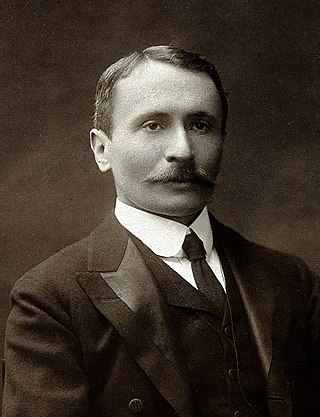
Sir Marc Aurel Stein, (Hungarian: Stein Márk Aurél; 26 November 1862 – 26 October 1943) was a Hungarian-born British archaeologist, primarily known for his explorations and archaeological discoveries in Central Asia. He was also a professor at Indian universities.

Neil Alden Armstrong was an American astronaut and aeronautical engineer who in 1969 became the first person to walk on the Moon. He was also a naval aviator, test pilot, and university professor.
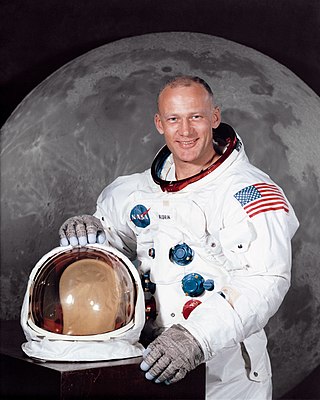
Buzz Aldrin is an American former astronaut, engineer and fighter pilot. He made three spacewalks as pilot of the 1966 Gemini 12 mission, and was the Lunar Module Eagle pilot on the 1969 Apollo 11 mission. He was the second person to walk on the Moon after mission commander Neil Armstrong.

Sir Vivian Ernest Fuchs was an English scientist-explorer and expedition organizer. He led the Commonwealth Trans-Antarctic Expedition which reached the South Pole overland in 1958.

The Royal Geographical Society (with the Institute of British Geographers), often shortened to RGS, is a learned society and professional body for geography based in the United Kingdom. Founded in 1830 for the advancement of geographical sciences, the society has 16,000 members, with its work reaching the public through publications, research groups and lectures.

Matthew Alexander Henson was an African American explorer who accompanied Robert Peary on seven voyages to the Arctic over a period of nearly 23 years. They spent a total of 18 years on expeditions together. He is best known for his participation in the 1908–1909 expedition that claimed to have reached the geographic North Pole on April 6, 1909. Henson said he was the first of their party to reach the North Pole.

Bertrand Piccard FRSGS is a Swiss explorer, psychiatrist and environmentalist. Along with Brian Jones, he was the first to complete a non-stop balloon flight around the globe, in a balloon named Breitling Orbiter 3. He was the initiator, chairman, and pilot, with André Borschberg, of Solar Impulse, the first successful round-the-world solar-powered flight. In 2012 Piccard was awarded a Champions of the Earth award by the UN Environment Programme. He is the founder and chairman of the Solar Impulse Foundation.
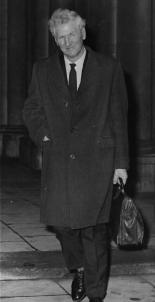
Henry Cecil John Hunt, Baron Hunt, was a British Army officer who is best known as the leader of the successful 1953 British expedition to Mount Everest.

Jacques Piccard was a Swiss oceanographer and engineer, known for having developed underwater submarines for studying ocean currents. In the Challenger Deep, he and Lieutenant Don Walsh of the United States Navy were the first people to explore the deepest known part of the world's ocean, and the deepest known location on the surface of Earth's crust, the Mariana Trench, located in the western North Pacific Ocean.
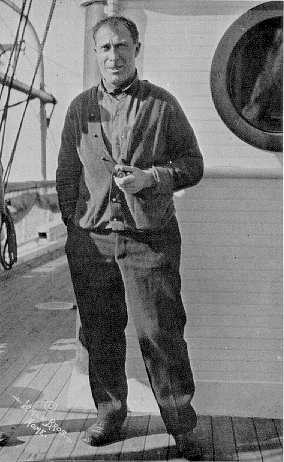
Robert Abram Bartlett was a Newfoundland-born American Arctic explorer of the late 19th and early 20th centuries.

The American Geographical Society (AGS) is an organization of professional geographers, founded in 1851 in New York City. Most fellows of the society are Americans, but among them have always been a significant number of fellows from around the world. The society encourages activities that expands geographical knowledge, and the interpretation of that knowledge so that it can be useful to geographers and other disciplines, especially in a policymaking environment. It is the oldest nationwide geographical organization in the United States. Over the century and a half of its existence, the AGS has been especially interested in three regions: the Arctic, the Antarctic, and Latin America. A signature characteristic of the AGS-sponsored exploration was the requirement that its expeditions produce tangible scientific results.

The Hubbard Medal is awarded by the National Geographic Society for distinction in exploration, discovery, and research. The medal is named for Gardiner Greene Hubbard, first National Geographic Society president. It is made of gold and is traditionally presented by the President of the United States.

The Royal Scottish Geographical Society (RSGS) is an educational charity based in Perth, Scotland founded in 1884. The purpose of the society is to advance the subject of geography worldwide, inspire people to learn more about the world around them, and provide a source of reliable and impartial geographical information.

Sir James Mann WordieCBE FRS FRSGS LLD was a Scottish polar explorer and geologist. Friends knew him as Jock Wordie.
Barry Chapman Bishop was an American mountaineer, scientist, photographer and scholar. With teammates Jim Whittaker, Lute Jerstad, Willi Unsoeld and Tom Hornbein, he was a member of the first American team to summit Mount Everest on May 22, 1963. He worked for the National Geographic Society for most of his life, beginning as a picture editor in 1959 and serving as a photographer, writer, and scientist with the society until his retirement in 1994. He was killed in an automobile accident near Pocatello, Idaho later that year.

Robert Zane Pearlman is an American space historian and the founder and editor of collectSPACE, a website devoted to news and information concerning space exploration and space-related artifacts and memorabilia, especially in popular culture. He is also a contributing writer to Space.com.

Mandip Singh Soin is a prominent Indian mountaineer, explorer, adventure travel expert, environmentalist, speaker and a Fellow of the Royal Geographical Society. He has spent over forty years in the field of adventure, having gone on expeditions to all the seven continents of the world. His mountaineering ascents and explorations include several Indian “firsts” like the first Indian ascent of Mount Meru in 1986 in the Himalayas as well as several first Indian ascents in the French and Swiss Alps, Italian Dolomites, Wales and Scotland. He is a strong advocate of responsible tourism and the Founder President of the Ecotourism Society of India.

Apollo 11 was the first human spaceflight to land on the Moon. In the decades after its 1969 mission took place, widespread celebrations have been held to celebrate its anniversaries.
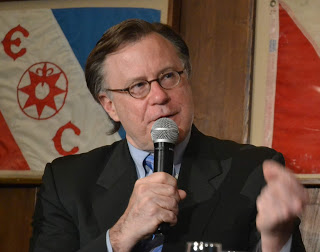
James Michael Clash is an American participatory adventure journalist and author who has engaged in and written about various challenging exploits. He has written for Forbes, AskMen, Huffington Post, Bloomberg Businessweek, and Automobile. Clash has written three books: Forbes To The Limits, The Right Stuff: Interviews with Icons of the 1960s, and The Right Stuff: Interviews with Icons of the 1970s and 1980s. He is a fellow and former board member of The Explorers Club and is also ticket holder 610 on Virgin Galactic for a flight to space.






















